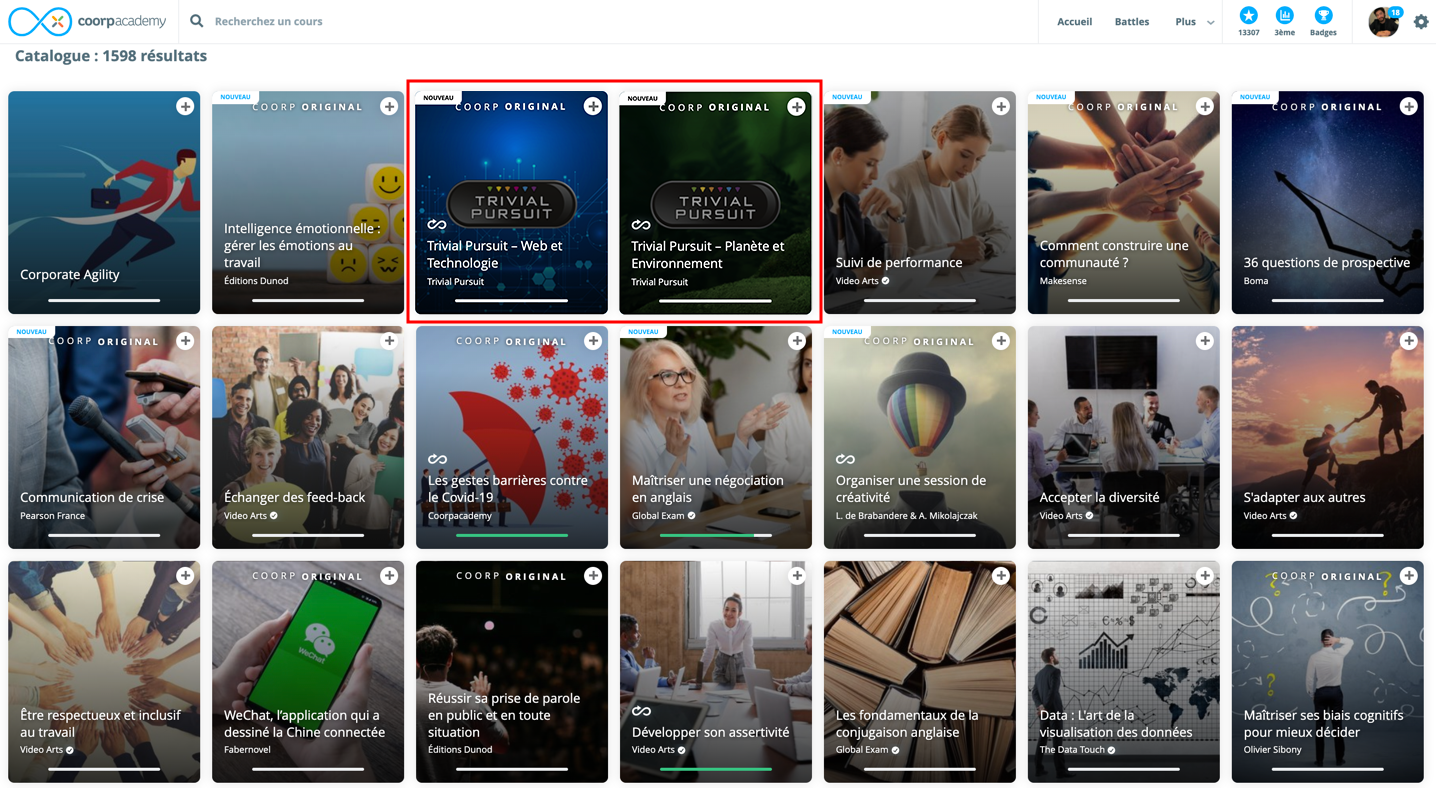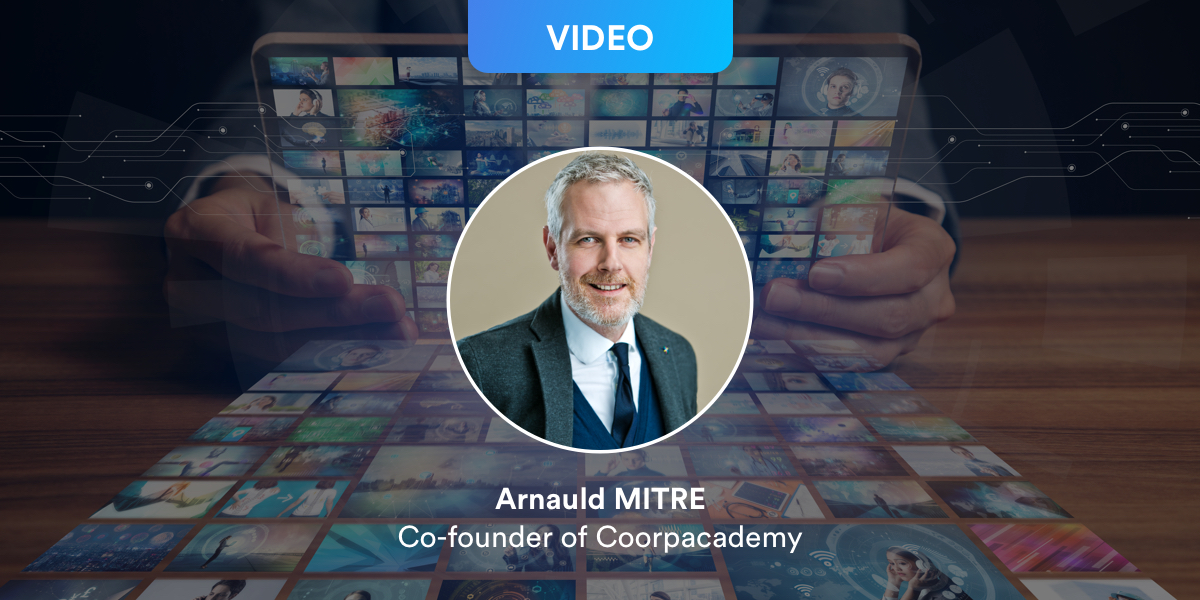December 15, 1979, two friends who love board games decide to play a game. Scott Abbott, a sports journalist, and Chris Haney, a photographer for the Montreal Gazette, ask themselves: who is the better player?
One argument leads to another, and an idea germinates in the minds of the two friends on this cold Canadian night. They don’t know it yet, but they have just invented a board game that will become mythical…
Trivial Pursuit !
Vendu à 20 millions d’unités en 1984, le jeu Trivial Pursuit est depuis plus de 40 ans, le jeu de culture générale pour animer soirées ou après-midis en famille, entre amis, et entre collègues.
Selling 20 million units in 1984, Trivial Pursuit has been the general knowledge game to liven up evenings and afternoons with family, friends and colleagues for over 40 years.
And it is also a partner publisher of Coorpacademy’s emblematic courses for 1 year now. The Trivial Pursuit courses offered on the Coorpacademy platform cover different themes, each time with 30 general knowledge questions on the chosen subject.
A partnership for a love of learning
If we are proud to collaborate with Hasbro to enrich our training offer, it is because this partnership is the symbol of our deepest conviction: learning can be fun and entertaining, while remaining effective and engaging. Indeed, with this partnership, we combine our desire to deal with all existing soft skills (and general knowledge is one of them!) with our constant search for innovative and entertaining formats, which make people want to learn and, above all, love learning.
To date, 7 Trivial Pursuit courses are available on the Coorpacademy platforms, and we have just added 2 new courses accessible from today, 23 July 2021:
Trivial Pursuit courses
Science & Nature
Geography
Entertainment
History
Arts & Literature
Sports & Leisure
(New) Planet and Environment: 30 questions to test your knowledge of the circular economy, to develop your sustainable thinking and initiate change.
(New) Web & Technology: 30 questions specially created for those who think they know everything about the Internet, GAFAM and the big names of Silicon Valley.
At the end of the programme, you can win a special certificate with all the pie charts to illustrate your general knowledge!
But what does an online Trivial Pursuit course look like?
Of course, you can find your Trivial Pursuit courses in your course catalogue:

Let’s choose the Planet and Environment course, published this week, which will allow you to develop the new essential skill for tomorrow’s world: sustainable thinking. It looks like a classic course, like all the courses you can find in the Coorpacademy catalogue. The same interface, a Basic, Advanced, and Coach level.
As part of this pie chart, you will, on completion of the Basic level, be able to :
- Know a simple technique for air conditioning homes
- Understand the concept of the circular economy
At the end of the Advanced level, you will be able to :
- Know which resource is the most exploited by humans after water
- Master the concept of grey energy
Finally, at the end of the Coach level, you will be able to :
- Understand the etymology of the word “climate”
- Know the plant-based alternatives to leather
Three levels, increasing levels of difficulty. So far, nothing new.
The difference with another course lies in the structure of the questions, as well as in the way the course is “validated”. Each level will “ask” you 10 general knowledge questions. There is no lesson, no video. Each correct answer earns you 4 stars (as in any other course) and you need 6 correct answers out of 10 minimum to access the next level. Here is an example of a question:

In 2016, Bertrand Piccard made the first round-the-world trip in a…
solar-powered
nuclear-powered
hydrogen-powered
In a solar plane! By answering a question, whether you answer correctly or not, you will have access to these two irremovable elements of the Coorpacademy pedagogy. The Key Point, and Did You Know? As in the following screenshot:

Now you know everything! All you have to do is play the course. And it is perhaps in this context that the expression we regularly use (playing a course, rather than following it, for the entertainment dimension we try to add to all our training content) takes on its fullest meaning.
It’s your turn to play!
TRIVIAL PURSUIT, the associated logo, the distinctive design of the game board, trivia cards, game tokens, and scoring wedges are trademarks of Hasbro and are used with permission. © 1981, 2020 Hasbro. All Rights Reserved. Licensed by Hasbro.

![International partnership: Coorpacademy will distribute Cegos e-learning solutions in Europe [Press Release]](https://www.coorpacademy.com/wp-content/uploads/2020/06/Partnership-between-Cegos-and-Coorpacademy.png)
